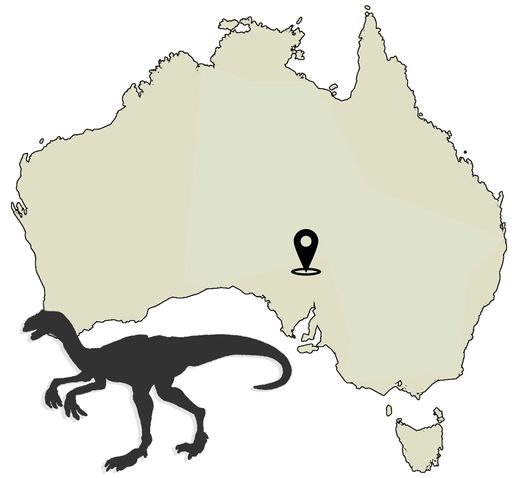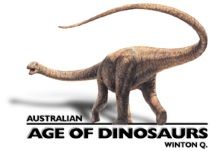Kakuru kujani

Kah-koo-roo koo-yan-eee
Meaning
Guyani (variant spelling of the indigenous tribe of the area) rainbow serpent
Period
Early Cretaceous (125–113 Mya)
Discovery and publication
Found in Andamooka, South Australia some time during the early 1970s. In early 1973, Neville Pledge of the South Australian Museum was contacted by Mr Santini, an opal miner, who informed him that an opalised bone from Andamooka had been sold to Anthony Fleming, an Adelaide opal shop owner. Pledge visited Fleming and explained the situation, so Fleming allowed photos to be taken, sketches to be done, and replicas made for the Museum. Pledge, with the help of American palaeontologist John Ostrom, determined that the bone was a theropod tibia (shinbone).
Unfortunately, the specimen was sold by Fleming soon after and was held in a private collection for more than thirty years (and at one point presumed lost altogether) until it resurfaced and the South Australian Museum was able to buy it in 2004. Ralph Molnar and Neville Pledge named and described Kakuru in 1980 on the basis of the shinbone replica.
Description
The only bone on which Kakuru is based is a nearly complete, opalised tibia. It is unusual among theropod shinbones in being very elongate and quite lightly constructed. Unfortunately it cannot be placed with much precision on the theropod family tree. In 2010 Paul Barrett and colleagues suggested that Kakuru was a tetanuran (a group which includes all theropods except the primitive forms like ceratosaurs, coelophysids and herrerasaurs), but also considered it to be a “nomen dubium” — a doubtful name.
Although its relationships and overall shape are not known, Kakuru was a small theropod, perhaps 2–3 m long and 1.5m–2m tall, with long slender legs (based on the tibia being quite slender).
